Nardi FN 305
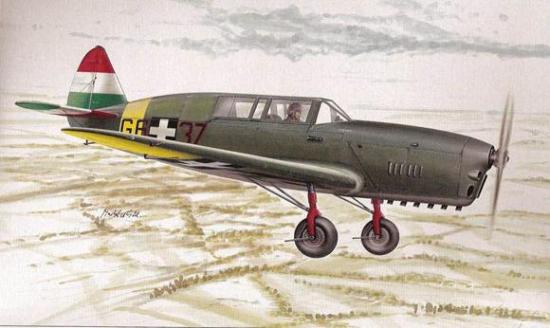
Maquette 1/48° - Model kit 1/48° - With courtesy of MPM productions - CMK-E-SHOP
DEVELOPPEMENT - DEVELOPMENT
Le Nardi F.N. 305 était un avion d'entraînement et de liaison développé à Milan par la société des frères Nardi (Euste, Elio et Luigi) « Fratelli Nardi » (Frères Nardi). Le prototype (n° de série MM277) effectua son premier vol le 19 février 1935, piloté par Arturo Ferrarin. Equipé d'un train rétractable, le F.N. 305 était un avion monomoteur à ailes basses cantilever. Cet avion était prévu en monoplace et biplace. Le prototype, un biplace à verrière fermée, était propulsé par un moteur radial Fiat A.70S de 200 CV (149 kW) et atteignit une vitesse maximum de 340 km/h (211 mph). Les prototypes suivants, un monoplace et un biplace, furent des avions à moteur Fiat également et à cockpit ouvert.
The Nardi F.N. 305 was a trainer and liaison aircraft designed in Milan by the company of the Nardi brothers ((Euste, Elio and Luigi) « Fratelli Nardi » (Nardi brothers). The prototype (s/n MM277) made its maiden flight on 19 February 1935, piloted by Arturo Ferrarin. Fitted with a retractable landing gear, the F.N. 305 was a low-wing cantilever monoplane. This plane was available in both single and two-seat versions. The prototype, a two-seater with an enclosed cockpit, was powered by a radial engine Fiat A.70S of 200 HP (149 kW) and it attained a maximum speed of 340 km/h (211 mph). The following prototypes, a single seat and a two-seat versions, were also fitted with Fiat engines and had opened cockpits.
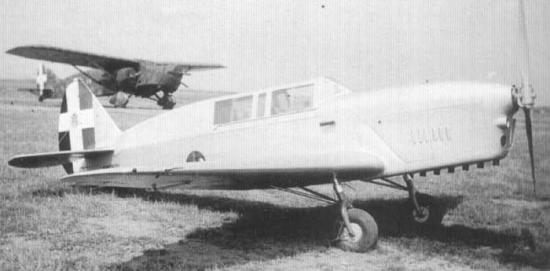
Photo : auteur et source inconnus - author and source unknown
Puis deux variantes longue distance F.N.305D furent produites, propulsées par un moteur radial Walter Bora de 200 CV (149 kW). Ces modèles étaient plus long de 90 cm que le prototype. Le premier (immatriculé I-UEBI), un biplace, effectua un vol sans escale de Rome à Addis Abeba (Ethiopie) en Mars 1939, remportant ainsi un record (4463,80 kms - 2,773.68 miles parcourus à une vitesse moyenne de 240 km/h). Le second F.N.305D était un avion monoplace acheté par la Yougoslavie pour un essai avorté de vol non-stop au dessus de l'Atlantique Nord.
Then, two long-range F.N.305D variants were built, powered by a 200 hp (149 kW) Walter Bora radial engine. These models were longer by 90 cm than the prototype. The first one (designated I-UEBI), a two-seater, made a non-stop flight from Rome to Addis Ababa (Ethiopia) in March 1939, thus gaining a record (4463.80 km - 2,773.68 miles covered at an average speed of 240 km/h (149 mph). The second F.N.305D was a single-seat aircraft bought by Yugoslavia for an aborted attempt at a non-stop North Atlantic flight.
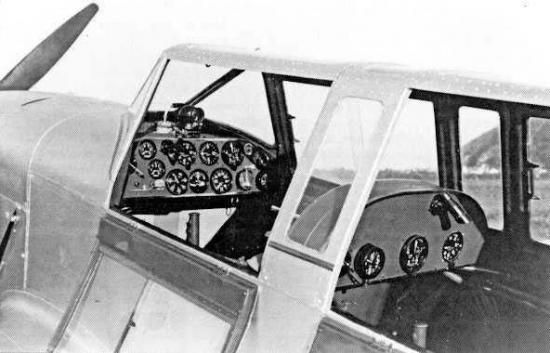
Photo : auteur et source inconnus - author and source unknown
Un prototype fût finalement testé avec un moteur Alfa Romeo 115 : il fut désigné F.N.305A et fut mis en production à l'usine Piaggio, l'usine Nardi n'ayant pas la capacité suffisante. L'Armée de l'Air Italienne commanda 258 F.N.305, presque tous des biplaces F.N.305A. Les quelques autres furent des F.N.305B (monoplace à cockpit ouvert) et F.N.305C (monoplace à cockpit fermé).
A prototype was finally tested with an Alfa-Romeo 115 engine : it was designated F.N.305A and was put into production at the Piaggio plant, the Nardi having not enough capacity. The Italian Air Force ordered 258 units of F.N.305, nearly all of them two-seat F.N.305A. The few others were F.N.305B (single-seat cockpit opened) and F.N.305C (single-seat cockpit enclosed).
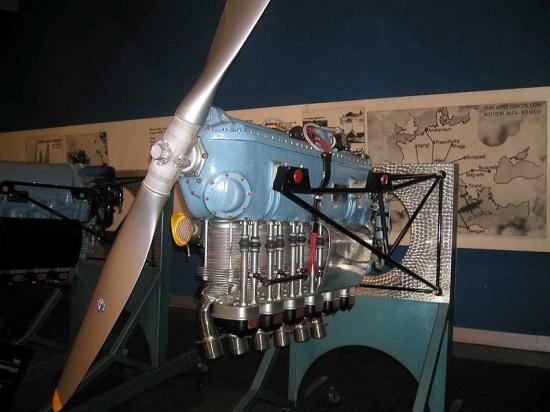
Alfa Romeo 115 (Museo Storico Alfa Romeo)
(L'autorisation est donnée de copier, distribuer et/ou modifier cette photo sous les conditions de laGNU Free Documentation License.
Permission is granted to copy, distribute and/or modify this picture under the terms of the GNU Free Documentation License).
Puis 9 avions furent vendus au Chili et 31 à la Roumanie. La France commanda de nombreux F.N.305 mais seulement 41 furent livrés à la déclaration de guerre en juin 1940. Enfin la Hongrie commanda 50 avions. La Roumanie fabriqua 124 avions sous licence par la société I.A.R. Le F.N.305 ne fut pas très apprécié des pilotes : il était considéré comme sous-motorisé, difficile à manoeuvrer à basse vitesse, instable en acrobatie et inconfortable.
Then 9 aircrafts were sold to Chile and 31 to Romania. France ordered many F.N.305 but only 41 had been delivered when war was declared in June 1940. At last Hungary ordered 50 units. Romania then built 124 aircraft under licence by I.A.R. The F.N.305 was not much appreciated by the pilots : it was considered underpowered, not easy to operate at low speed, unstable in acrobatics and uncomfortable.
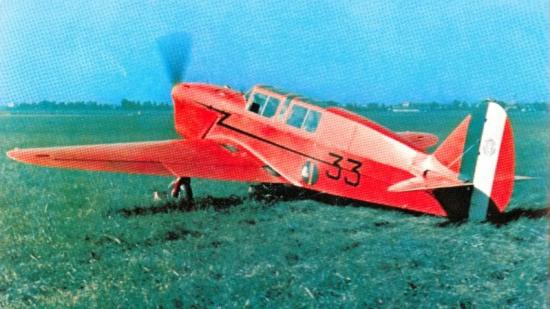
Photo : auteur et source inconnus - author and source unknown
La production s'étendit essentiellement de 1937 à 1943 bien que 8 avions fussent partiellement fabriqués en 1948 à l'usine Piaggio.
Aircrafts were manufactured largely between 1937 and 1943, although 8 units were partly built by the Piaggio factory in 1948.

Photo : auteur et source inconnus - author and source unknown
Une évolution du F.N.305 fut le F.N.315. Il fut le résultat d'améliorations apportés à la queue, le cockpit et les ailes (dièdre plus important et nouveaux volets). Le premier vol fut effectué le 10 juillet 1938 par le pilote Giovanni Zappetta. Plusieurs moteurs à pistons en ligne furent testés : l'Alfa-Romeo 115-1 (205 CV-153 kW), l'Argus As 10E (200 CV - 149 kW) et le Hirth HM.508 (230 CV - 172 kW). 6 avions furent produits avec le moteur Hirth (dont 2 pour la Force Aérienne Suisse) puis 25 avec le moteur Alfa-Romeo pour l'Armée de l'Air Italienne qui furent utilisés comme avions d'entraînement.
An improvement of the F.N.305 was the F.N.315. It was the result of improvements performed to the tail, the cockpit and the wings (increased dihedral and new flaps). The maidden flight was done on the 10th July, 1938. Several inline piston engines were tested : the Alfa-Romeo 115-1 (205 HP-153 kW), the Argus As 10E (200 HP - 149 kW) and the Hirth HM.508 (230 HP - 172 kW). 6 units were manufactured with the Hirth engine (including 2 for the Swiss Air Force) and then 25 with the Alfa-Romeo engine for the Italian Air Force which were used as training aircrafts.
L'ultime développement du F.N.305 fut le F.N.316. Le prototype vola en automne 1941, motorisé par un moteur Isotta-Fraschini Beta RC 10 IZ de 270 CV (210 kW) qui connut des problèmes récurrents de refroidissement. Une commande de 50 avions fut finalement la seule commande de F.N.316. En fait, 49 avions furent fabriqués : 30 F.N.316M monoplace (cockpit fermé) et 19 F.N.316B biplace. Par rapport au prototype, leur aérodynamique avait été améliorée notamment au niveau des ailes et de la queue. Les F.N.316M servirent dans les écoles de la Regia Aeronautica à partir de janvier 1942 et les F.N.316B à partir de juin 1943. Après l'Armistice avec les alliés, quelques avions restèrent en service au sein de la Luftwaffe dans le Nord de l'Italie.
The final development of the F.N.305 was the F.N.316. The prototype first flew in autumn 1941, powered by a Isotta-Fraschini Beta RC 10 IZ engine of 270 HP (210 kw) which had continual cooling problems. An order of 50 units was finally the only order of F.N.316s. In fact, 49 units were manufactured : 30 single-seat F.N.316M (enclosed cockpit) and 19 two-seater F.N.316B. Compared to the prototype, their aerodynamics had been improved in particular the wings and the tail. The F.N.316M were used in the schools of Regia Aeronautica from January 1942 and the F.N.316B from June 1943. After the Armistice with the allies, some aircrafts remained in service with the Luftwaffe in Northern Italy.
VERSIONS - VARIANTS
F.N.305
Le prototype biplace à cockpit fermé (moteur radial Fiat A.70S de 200 CV / 149 kW).
The prototype, biplane with enclosed cockpit (Fiat A.70S radial engine - 200 HP / 149 kW).
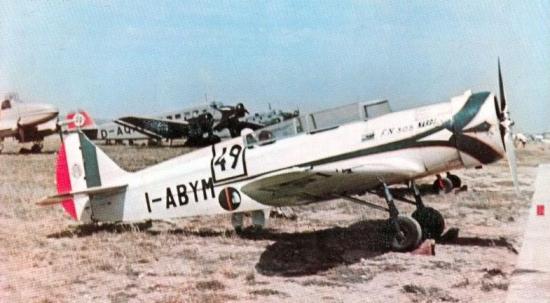
Photo : auteur et source inconnus - author and source unknown
F.N.305A
Version biplace la plus largement produite (cockpit fermé). Le moteur était un Alfa Romeo 115-6 (185 CV - 138 kW).
Two-seater version and main production variant (enclosed cockpit). The engine was a Alfa Romeo 115-6 (185 HP - 138 kW).
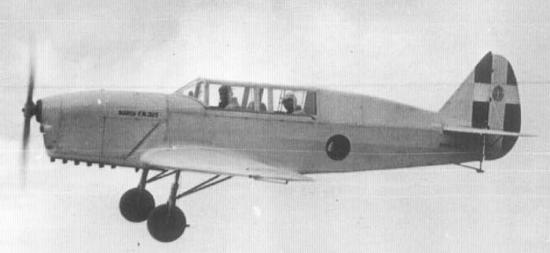
Photo : auteur et source inconnus - author and source unknown
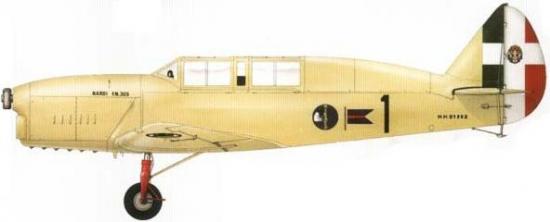
© Marco Gueli- source : www.airwar.ru
F.N.305B
Version monoplace à cockpit ouvert. Single-seat version with opened cockpit.
F.N.305C
Version monoplace à cockpit fermé. Single-seat version with enclosed cockpit.
F.N.305D
Version longue distance à moteur radial Walter Bora (200 HP - 149 kW). 2 avions fabriqués : 1 monoplace et 1 biplace.
Long range version with a Walter Bora radial engine (200 HP - 149 kW). 2 aircrafts buit : 1 single-seat and 1 two-seater.
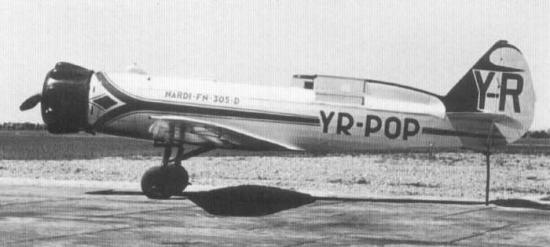
Photo : auteur et source inconnus - author and source unknown
EVOLUTIONS
F.N.310
Le F.N.310 était un quadriplace (deux paires côte à côte) developpé par Luigi et Euste Nardi en élargissant le F.N.305. L'envergure de l'avion passait à 10 m. Une version ambulance fut envisagée pour recevoir un brancard à la place des deux sièges arrières.
The F.N.310 was a four-seat tourer (two pairs side by side) developped by Luigi and Euste Nardi by enlarging the F.N.305. The span reached 10 m. An ambulance variant was intended with a stretcher to be located in place of the rear seats.
F.N.315
F.N.305 modifié au niveau de la queue, du cockpit et des ailes avec moteurs Hirth HM.508 (230 CV - 172 kW) (6 avions) puis Alfa-Romeo 115-1 (205 CV-153 kW) (25 avions).
F.N.305 modified (tail, cockpit and wings) with a Hirth HM.508 engine (230 CV - 172 kW) (6 units) and then a Alfa-Romeo 115-1 engine (205 CV-153 kW) (25 units).
F.N.316M & F.N.316B
Ultime évolution du F.N.305 dont l'aérodynamique fut modifiée (ailes et queue). Le moteur était un Isotta-Fraschini Beta RC 10 IZ de 270 CV (210 kW).
Ultimate evolution of the F.N.305 whose aerodynamics was modified (wings and tail). The engine was an Isotta-Fraschini Beta RC 10 IZ of 270 HP (210 kw).
FICHE TECHNIQUE - TECHNICAL DATA
F.N.305A
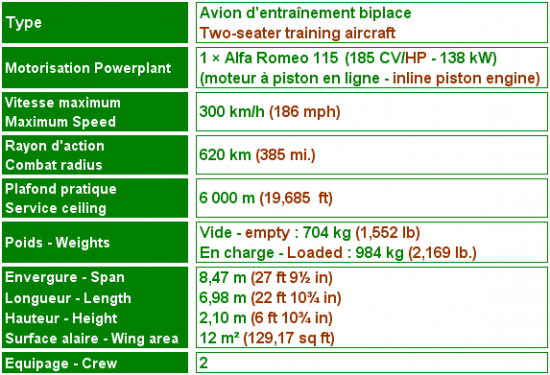
LE FN 305 A L'ETRANGER - THE FN305 ABROAD
De 1937 à 1940, les F.N.305 participèrent à de nombreux concours et rallyes sportifs ce qui fit une bonne publicité à l'entreprise Nardi, ce qui eut pour conséquence de nombreuses commandes export.
From 1937 to 1940, F.N.305s took part in many contests and sport rallies, thus gaining for the Nardi company a good publicity, which led as a result to many export orders.
CHILI - CHILE
En 1938, le Chili commanda 9 avions F.N.305 (8 biplace et 1 monoplace). Ils furent affectés au Groupe n°4 de l'Armée de l'Air Chilienne à la mi 1938. Ils furent armés de 2 mitrailleuses Breda-SAFAT de 7.7 mm (0.303 in). De nombreux accidents, parfois mortels, conduisirent à la perte de 3 appareils. Mais les 6 autres restèrent en service jusqu'en juin 1942, date à laquelle ils furent retirés du service, faute de pièces de rechange. Ils furent stockés jusqu'en mars 1944 puis détruits.
In 1938, Chile ordered nine aircrafts (8 two seaters and 1 single seater). they were sent to the Group N° 4 of the Chilean Air Force mid-1938. They were fitted with two 7.7 mm (0.303 in) Breda-SAFAT machine-guns. Several accidents, some of them fatal, led to the destruction of 3 aircrafts. But the 6 other aircrafts continued in service until June 1942, when they were finally withdrawn from service due to the unavailability of spare parts. They were then stored until March 1944, when they were scrapped.
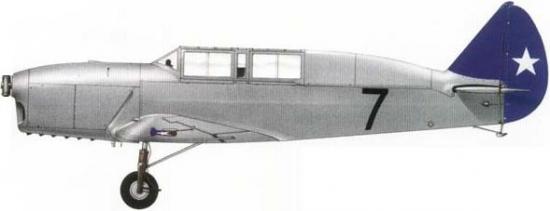
F.N.305 - Grupo 4 - Chili 1938, Chile 1938.
Avion n°7 détruit sur accident le 6 janvier 1941 (équipage tué : 2nd Lt.Cesar Cordoves et 2nd Sergent Armando Morales)
Aircraft # 7 destroyed in accident on 6th January 1941 (crew killed : 2nd Lt.Cesar Cordoves and 2nd Sergent Armando Morales)
© Marco Gueli- source : www.airwar.ru
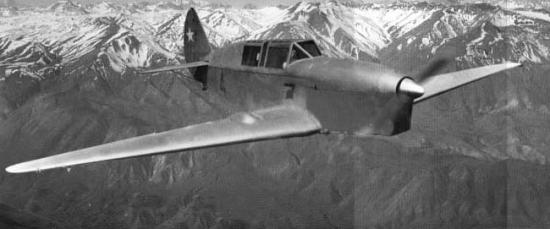
F.N.305 - Chili, Chile
Photo : auteur et source inconnus - author and source unknown
ROUMANIE - ROMANIA
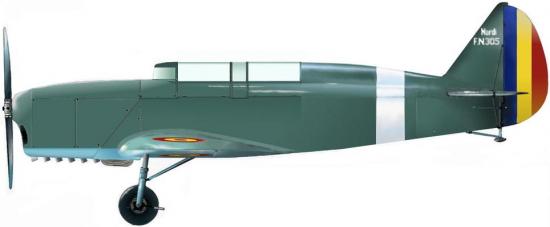
F.N.305IV / IAR-6GI
© MATT77 - Marco Tunesi papermodels MATT77
En 1938, la Roumanie commanda 31 avions F.N.305. Un accord de fabrication sous license fut ensuite signé avec la société I.A.R. basée à Brasov, qui fabriqua 124 avions. Le F.N.305 devint l'avion d'entraînement Roumain standard. Le moteur du F.N.305 Roumain fut le I.A.R. 6G-1, une version fabriquée sous licence du moteur de Havilland Gipsy Six. Enfin, la Roumanie reçut 21 F.N.305 de la sixième série de production à la place d'avions de transport SIAI S.83 achetés puis refusés par le gouvernement Roumain.
In 1938, Romania ordered 31 units of F.N.305. An agreement of licence-manufacture was reached with the I.A.R. company based in Brasov, which built 124 units. The F.N.305 became the standard Romanian trainer. The engine of the Romanian F.N.305 was the I.A.R. 6G-1, a licence-built version of the de Havilland Gipsy Six engine. Romania then received 21 F.N.305s from the sixth production series, instead of SIAI S.83 transport aircrafts, purchased and then rejected by the Romanian government.
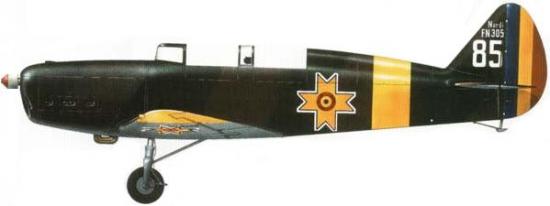
F.N.305A - Roumanie 1941, Rumania 1941.
© Marco Gueli- source : www.airwar.ru
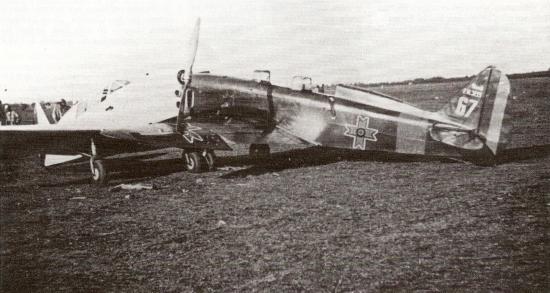
F.N.305 IV & FN 305 II - Accident au roulage - Accident on the ground
Photo : source inconnue - unknown source
LES AUTRES PAYS - OTHER COUNTRIES
La France passa la plus grande commande de F.N.305 (300 avions) mais seulement 41 furent livrés en juin 1940 quand l'Italie déclara la guerre à la France. Le dernier pays à commander des F.N.305 fut la Hongrie avec 50 avions. Deux modèles F.N.315 furent également livrés à la Suisse.
France placed the largest order of F.N.305 (300 units) but only 41 units were delivered in June 1940 when Italy declared war on France. The final country to place an order for F.N.305 was Hungary with 50 units ordered. Two units of F.N.315 were also delivered to Switzerland.
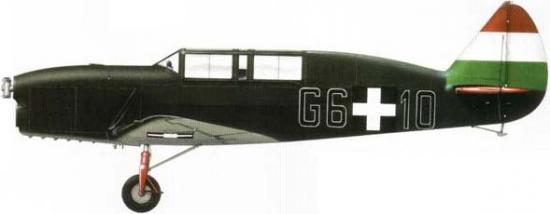
F.N.305 - Hongrie 1943, Hungary 1943.
© Marco Gueli- source : www.airwar.ru

